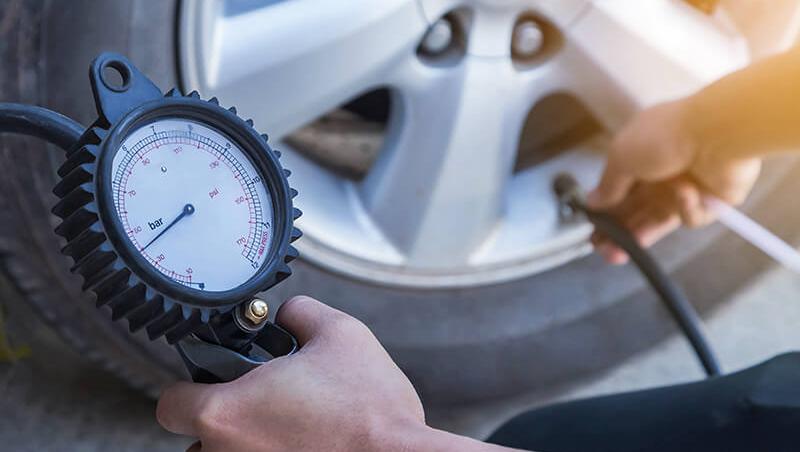How to Fill Tires with Air
Properly inflated tires are essential for maximizing the lifespan of your tires, as well as enhancing fuel efficiency, ride quality, and overall vehicle performance in Salt Lake City. If you're wondering how to fill tires with air correctly, the dedicated service team at Salt Lake Valley Buick GMC is here to provide expert guidance. In this comprehensive guide, we'll explain the importance of maintaining the recommended car tire pressure and offer a step-by-step tutorial on adding air to your tires.
Adding Air to Tires: A Step-by-Step Guide
When it comes to adjusting your car's tire pressure, the process is relatively simple, especially with the right instructions. Follow these easy steps to add air to your tires effectively:
In the event that you accidentally over-inflate your tire, remain calm. Simply release some air by pressing the pin on the tire valve with the back of the air hose nozzle or using the small knob on the rounded end of the tire gauge. Remember, it may take a few attempts to achieve the optimal pressure, so don't be discouraged—it's a skill that improves with practice.
How Much Air Should I Put in My Tires?
"How much air should I put in my tires?" is a common question we hear. Luckily, learning how to fill tires with air and how much to add is simple! To find the recommended tire pressure for your vehicle, check for a sticker located inside the driver's door. Alternatively, consult your owner's manual for comprehensive information regarding your car's tire pressure. Typically, passenger cars suggest maintaining a tire pressure of 32 to 35 psi (pounds per square inch) when they are cold. For the most accurate reading, measure the tire pressure after your vehicle has cooled off. Keep the following considerations in mind during the inflation process:
If you notice that your tires are consistently under-inflated or require additional tire services like rotations or wheel alignments, we encourage you to book an appointment with our service center. Contact us online to learn more about our wide range of services. While you're at it, take a look at our current service coupons to find exciting offers on essential maintenance.
Adding Air to Tires: A Step-by-Step Guide
When it comes to adjusting your car's tire pressure, the process is relatively simple, especially with the right instructions. Follow these easy steps to add air to your tires effectively:
- Position your vehicle next to the air dispenser at a nearby gas station.
- Ensure that the air hose can reach all four tires of your car.
- Remove the cap from the tire valve on the first tire.
- Utilize a tire gauge to measure the current air pressure in the tire.
- Repeat the measurement process for the remaining three tires.
In the event that you accidentally over-inflate your tire, remain calm. Simply release some air by pressing the pin on the tire valve with the back of the air hose nozzle or using the small knob on the rounded end of the tire gauge. Remember, it may take a few attempts to achieve the optimal pressure, so don't be discouraged—it's a skill that improves with practice.
How Much Air Should I Put in My Tires?
"How much air should I put in my tires?" is a common question we hear. Luckily, learning how to fill tires with air and how much to add is simple! To find the recommended tire pressure for your vehicle, check for a sticker located inside the driver's door. Alternatively, consult your owner's manual for comprehensive information regarding your car's tire pressure. Typically, passenger cars suggest maintaining a tire pressure of 32 to 35 psi (pounds per square inch) when they are cold. For the most accurate reading, measure the tire pressure after your vehicle has cooled off. Keep the following considerations in mind during the inflation process:
- Avoid inflating your tires to the maximum psi indicated on the tire itself. This value denotes the maximum pressure the tire can handle, rather than the recommended psi.
- Overinflated tires can lead to a bouncy ride quality and make the vehicle harder to handle.
- Under-inflated tires can result in faster wear and tear.
If you notice that your tires are consistently under-inflated or require additional tire services like rotations or wheel alignments, we encourage you to book an appointment with our service center. Contact us online to learn more about our wide range of services. While you're at it, take a look at our current service coupons to find exciting offers on essential maintenance.

